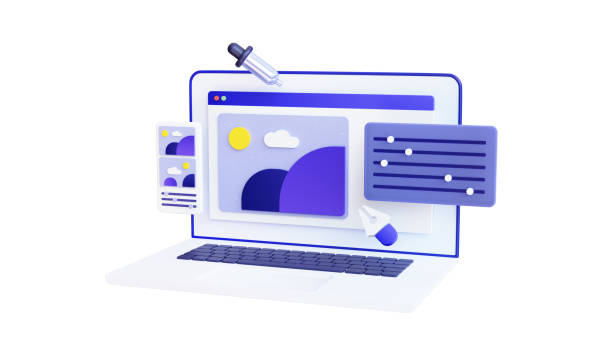In the ever-evolving landscape of digital marketing, businesses have two primary strategies to choose from: organic and paid marketing. Understanding the differences between these two approaches is crucial for companies aiming to enhance their online presence and achieve their marketing goals. This article delves into the key distinctions between organic and paid digital marketing, their benefits and drawbacks, and how businesses can effectively leverage both strategies to maximize their reach and impact.
What is Organic Digital Marketing?
Organic digital marketing refers to the strategies that help increase visibility and traffic to a website without directly paying for advertising. This approach relies on the natural ranking of a website on search engine results pages (SERPs) and the cultivation of an engaged audience through valuable content. The primary channels for organic marketing include search engine optimization (SEO), social media marketing, content marketing, and email marketing.
Key Features of Organic Marketing
- SEO Focus: Organic marketing heavily emphasizes optimizing a website for search engines to improve its visibility. This includes keyword research, on-page optimization, technical SEO, and building backlinks.
- Content Creation: Creating high-quality, informative, and engaging content is at the heart of organic marketing. This can include blog posts, articles, infographics, videos, and more, all designed to attract and retain an audience.
- Social Media Engagement: Organic social media marketing involves sharing content, engaging with followers, and building a community around a brand without the use of paid promotions.
- Long-Term Strategy: Organic marketing is typically a long-term strategy that builds momentum over time. The results may not be immediate, but the benefits can be lasting.
- Cost-Effectiveness: While organic marketing may require an initial investment in content creation and SEO, it can lead to sustainable traffic and engagement without ongoing advertising costs.
What is Paid Digital Marketing?
Paid digital marketing, on the other hand, involves investing in advertisements to gain visibility and drive traffic to a website or business. This approach can deliver immediate results and is often used to supplement organic efforts. Paid marketing strategies include pay-per-click (PPC) advertising, social media ads, display advertising, and influencer partnerships.
Key Features of Paid Marketing
- Immediate Results: Unlike organic marketing, paid marketing can deliver quick results. Once a campaign is launched, businesses can see immediate traffic and engagement.
- Targeted Advertising: Paid marketing allows businesses to target specific demographics, interests, and behaviors, ensuring that their ads reach the most relevant audience.
- Scalability: Paid campaigns can be scaled up or down based on budget and performance. This flexibility allows businesses to adjust their advertising strategies in real-time.
- Measurable Performance: Paid marketing offers robust analytics and tracking capabilities, enabling businesses to monitor their return on investment (ROI) and make data-driven decisions.
- Control Over Messaging: Paid advertising provides more control over messaging and branding, allowing businesses to craft specific messages that resonate with their target audience.
Comparing Organic and Paid Marketing
To understand the differences between organic and paid digital marketing better, let’s compare the two approaches across various dimensions:
1. Cost
Organic Marketing: While organic marketing can be cost-effective over time, it requires investment in quality content, SEO, and ongoing maintenance. The costs are often front-loaded, but the long-term benefits can outweigh the initial expenses.
Paid Marketing: Paid marketing requires continuous investment. Depending on the platform and competition, costs can vary widely. Businesses must carefully manage their budgets to ensure a positive ROI.
2. Time Frame
Organic Marketing: Results from organic marketing take time to materialize. Businesses may need to wait weeks or months to see significant traffic and engagement. However, the benefits can be long-lasting once established.
Paid Marketing: Paid marketing can generate immediate results. Campaigns can drive traffic and leads quickly, making it an attractive option for businesses needing quick visibility.
3. Sustainability
Organic Marketing: Organic marketing tends to have a more sustainable impact. Once a website achieves a high ranking on search engines, it can maintain that position with consistent effort and quality content.
Paid Marketing: The results from paid marketing are often temporary. When a business stops funding its ads, the traffic typically declines immediately. Continuous investment is required to maintain visibility.
4. Audience Engagement
Organic Marketing: Organic marketing often fosters deeper audience engagement. By providing valuable content, businesses can build trust and loyalty among their audience, leading to long-term relationships.
Paid Marketing: While paid marketing can effectively drive traffic, it may not always foster the same level of engagement. Users may click on ads but may not engage further with the brand unless the messaging resonates with them.
5. Brand Credibility
Organic Marketing: High rankings in search results often lend credibility to a brand. Users tend to trust organic results more than paid ads, as they perceive them as more authentic and relevant.
Paid Marketing: Paid ads can be effective, but they may not carry the same level of credibility. Users may be more skeptical of advertisements, which can impact their willingness to engage with the brand.
Benefits of Organic Marketing
- Cost-Effectiveness: Once established, organic traffic is free, leading to lower overall marketing costs.
- Trust and Authority: High-quality content can establish a brand as an authority in its field, enhancing trust and credibility.
- Long-Term Results: Organic marketing can yield long-lasting results, providing ongoing traffic and leads without continuous investment.
- Community Building: Organic strategies often lead to a loyal community around the brand, fostering deeper relationships with customers.
Benefits of Paid Marketing
- Immediate Visibility: Paid marketing can quickly place a brand in front of its target audience.
- Precise Targeting: Businesses can target specific demographics, ensuring their ads reach the most relevant users.
- Measurable ROI: Paid marketing provides robust analytics, allowing businesses to track performance and optimize campaigns for better results.
- Flexibility: Paid campaigns can be easily adjusted based on performance, allowing businesses to react quickly to market changes.
Combining Organic and Paid Marketing
While organic and paid marketing have distinct differences, they can also complement each other effectively. Here are some strategies for leveraging both approaches:
1. Use Paid Marketing to Boost Organic Efforts
Businesses can use paid marketing to drive traffic to their website while their organic efforts are gaining traction. This approach allows companies to establish a presence quickly and gather valuable data on customer behavior.
2. Retargeting Strategies
Paid ads can be used to retarget users who have previously engaged with a brand’s organic content. This strategy keeps the brand top-of-mind and encourages users to return for further engagement.
3. Data-Driven Decisions
By analyzing data from both organic and paid campaigns, businesses can make informed decisions about where to allocate resources. Insights gained from paid advertising can help refine organic strategies, ensuring that content aligns with audience interests.
4. Test Content Strategies
Paid marketing allows businesses to test different content strategies quickly. By promoting various pieces of content, companies can determine what resonates with their audience and optimize their organic efforts accordingly.
Choosing the Right Approach for Your Business
When deciding between organic and paid digital marketing, businesses must consider their goals, budget, and timeline. Here are some tips for making the right choice:
1. Define Your Objectives
Identify what you aim to achieve with your marketing efforts. If you need immediate visibility and leads, paid marketing may be the best choice. If your goal is to build a long-term brand presence, focus on organic strategies.
2. Assess Your Budget
Consider your available budget for marketing. Paid advertising requires ongoing investment, while organic strategies may require less financial commitment in the long run.
3. Understand Your Audience
Research your target audience to determine where they spend their time online. If they primarily engage with social media, a paid social campaign may be effective. If they search for information, organic SEO may be the way to go.
4. Monitor and Adapt
Track the performance of your marketing efforts and be prepared to adapt your strategies based on the results. A combination of organic and paid approaches may yield the best outcomes.
Conclusion
In conclusion, understanding the differences between organic and paid digital marketing is essential for any business looking to thrive in the digital landscape. Each approach offers unique advantages and challenges, and the best strategy often involves a combination of both. By carefully considering your goals, budget, and audience, you can create a robust digital marketing strategy that drives results and enhances your online presence.
Whether you are working with digital marketing advertising companies or a digital marketing agency in Sydney, or searching for marketing agencies near me, it’s important to stay informed and adapt your strategies to meet the ever-changing demands of the digital world. With the right approach, you can achieve lasting success in your marketing endeavors.
click here to visit website





